This thread is for pictures of and with the 5cm F2 Sonnar and descendants.
This includes the original Carl Zeiss Jena 5cm F2 Sonnar from 1932 up through the Bertele Sonnar being introduced by Skyllaney next year.
To start things off: Three versions of the pre-war Carl Zeiss Jena 5cm F2 Sonnar. A 1933 Rigid lens, 1935 Rigid, and much more common Collapsible 5cm F2.



The left most- this was a short-lived design, has no threads for filters, and a horrible mechanism for holding the barrel into the mount. The barrel is screwed into place in the mount, and Threads for a the set screw are drilled into the two pieces of metal. The set screw holds the barrel into place. The front element is stamped in place. There is also a version of the F1.5 like this.

The middle Sonnar- rare. It uses the same mount as the F1.5 lens. An extra piece of metal is used to fit the barrel into the mount. Construction is similar to the standard collapsible mount- but the namering is different.

The Sonnar on the right is the standard collapsible.

This includes the original Carl Zeiss Jena 5cm F2 Sonnar from 1932 up through the Bertele Sonnar being introduced by Skyllaney next year.
To start things off: Three versions of the pre-war Carl Zeiss Jena 5cm F2 Sonnar. A 1933 Rigid lens, 1935 Rigid, and much more common Collapsible 5cm F2.



The left most- this was a short-lived design, has no threads for filters, and a horrible mechanism for holding the barrel into the mount. The barrel is screwed into place in the mount, and Threads for a the set screw are drilled into the two pieces of metal. The set screw holds the barrel into place. The front element is stamped in place. There is also a version of the F1.5 like this.

The middle Sonnar- rare. It uses the same mount as the F1.5 lens. An extra piece of metal is used to fit the barrel into the mount. Construction is similar to the standard collapsible mount- but the namering is different.

The Sonnar on the right is the standard collapsible.

Disassembly of the 175 block Rigid:
Remove set screw holding the barrel into the mount, the tap is shown here:






You must unscrew the "extension", take off the retaining ring for the aperture ring. Aperture ring off, reveals set screws holding the name ring in place. Remove the name ring allows access to the front groups. The CZL Sonnar has the front element and triplet stamped into metal with the SN of the lens on each. The rear doublet simply unscrews, also has the SN stamped in.
On the Wartime 5cm F1.5 Sonnars: Hidden set screws also hold the namering in place, and the rear fixture in place. Disassemble the F1.5 Sonnars with SN above 268xxxx like this.
Remove set screw holding the barrel into the mount, the tap is shown here:






You must unscrew the "extension", take off the retaining ring for the aperture ring. Aperture ring off, reveals set screws holding the name ring in place. Remove the name ring allows access to the front groups. The CZL Sonnar has the front element and triplet stamped into metal with the SN of the lens on each. The rear doublet simply unscrews, also has the SN stamped in.
On the Wartime 5cm F1.5 Sonnars: Hidden set screws also hold the namering in place, and the rear fixture in place. Disassemble the F1.5 Sonnars with SN above 268xxxx like this.
markjwyatt
Well-known
I have the Zeiss Opton 50mm f2 Sonnar on my Contax iia. The rendering of the lens is very nice.

Sloped Rocks by Mark Wyatt, on Flickr
Bokeh is very nice also.

flowers by Mark Wyatt, on Flickr

Sloped Rocks by Mark Wyatt, on Flickr
Bokeh is very nice also.

flowers by Mark Wyatt, on Flickr
1934 5cm F2 Collapsible, wide-open on the M Monochrom. Orange filter.

Same lens, Same girl-
On the Contax IIIa, wide-open.

I've owned this lens for almost 20 years, converted it to Leica Mount and modified the J-8 focus mount for 0.8m or so.
With the M9,
 Sonnar_F2_1b by fiftyonepointsix, on Flickr
Sonnar_F2_1b by fiftyonepointsix, on Flickr
 Sonnar_F2_1 by fiftyonepointsix, on Flickr
Sonnar_F2_1 by fiftyonepointsix, on Flickr

Same lens, Same girl-
On the Contax IIIa, wide-open.

I've owned this lens for almost 20 years, converted it to Leica Mount and modified the J-8 focus mount for 0.8m or so.
With the M9,
 Sonnar_F2_1b by fiftyonepointsix, on Flickr
Sonnar_F2_1b by fiftyonepointsix, on Flickr Sonnar_F2_1 by fiftyonepointsix, on Flickr
Sonnar_F2_1 by fiftyonepointsix, on Flickrmarkjwyatt
Well-known
Here are a couple with the Jupiter 8 (on a Kiev 4a); Fuji Superia 400 XTRA:

Country Road by Mark Wyatt, on Flickr

Japanese Ceramic Dragons by Mark Wyatt, on Flickr

Country Road by Mark Wyatt, on Flickr

Japanese Ceramic Dragons by Mark Wyatt, on Flickr
charjohncarter
Mentor
Mark and Brian, very nice shots thanks for posting. Maybe I'll be lucky enough to try one some day.
Bingley
Mentor
Like Mark, I’ve got the post-war Opton Sonnar in Contax mount. I really like it. I’ve got adapters that allow me to use the lens on both Leica M and LTM cameras.
 Foothill scrub by Steve Macfarlane, on Flickr
Foothill scrub by Steve Macfarlane, on Flickr
 Flora by Steve Macfarlane, on Flickr
Flora by Steve Macfarlane, on Flickr
 Aspens, Bishop Creek by Steve Macfarlane, on Flickr
Aspens, Bishop Creek by Steve Macfarlane, on Flickr
 Foothill scrub by Steve Macfarlane, on Flickr
Foothill scrub by Steve Macfarlane, on Flickr Flora by Steve Macfarlane, on Flickr
Flora by Steve Macfarlane, on Flickr Aspens, Bishop Creek by Steve Macfarlane, on Flickr
Aspens, Bishop Creek by Steve Macfarlane, on FlickrArthur
Established
Hello... I have a Sonnar 50/2 with SN. 1449878. Would anyone know the year of manufacture? I doesn't look like any of Sonnar Brian's three examples.
I have an assortment of adapters so I use it on Leica LTM and M and Contax IIA and an Olympus Micro-four-thirds.
Thank in advance for your help.
Arthur
I have an assortment of adapters so I use it on Leica LTM and M and Contax IIA and an Olympus Micro-four-thirds.
Thank in advance for your help.
Arthur
Erik van Straten
Mentor
I’ve got adapters that allow me to use the lens on both Leica M and LTM cameras.
Steve, what kind of adapters do you use? The pictures look great.
Erik.
Hello... I have a Sonnar 50/2 with SN. 1449878. Would anyone know the year of manufacture? I doesn't look like any of Sonnar Brian's three examples.
I have an assortment of adapters so I use it on Leica LTM and M and Contax IIA and an Olympus Micro-four-thirds.
Thank in advance for your help.
Arthur
Is yours marked 50mm or 5cm? The West German post-war lenses started over with serial numbers. Yours is probably mid 1950s, made in West Germany. The "Carl Zeiss Jena" lenses made in post-war East Germany continued the serial number sequence start by Zeiss, the West German lenses "reset" the serial number sequence after WW-II.
http://camera-wiki.org/wiki/Carl_Zeiss_serial_numbers
The Post-War West German Zeiss Opton 50mm F2.
Front view, then flipped-over.



Two distinct types. Note difference in the Font and fixtures for the elements.
These Serial Numbers are ascending order, left to right. BUT- I have seen overlap in these two designs. I've also seen two different styles of West German 50mm F1.5 Sonnars.
The East German 5cm F2 Sonnar is another type altogether- I have one coming in and will add it when it gets here.
Front view, then flipped-over.



Two distinct types. Note difference in the Font and fixtures for the elements.
These Serial Numbers are ascending order, left to right. BUT- I have seen overlap in these two designs. I've also seen two different styles of West German 50mm F1.5 Sonnars.
The East German 5cm F2 Sonnar is another type altogether- I have one coming in and will add it when it gets here.
Love that collapsible Nikkor, from the same batch as mine, s/n 811 1000 (811 for the batch that started Nov. 1948.)
.
.
WJJ3
Well-known
Nice set of Japanese 5cm f2 Sonnars there. I have a 'black belt' Nikkor-H like yours and it is a wonderful lens. The close focus feature makes it unique among Leica mount 50s. I tested mine once and found the MFD to be exactly 45cm.
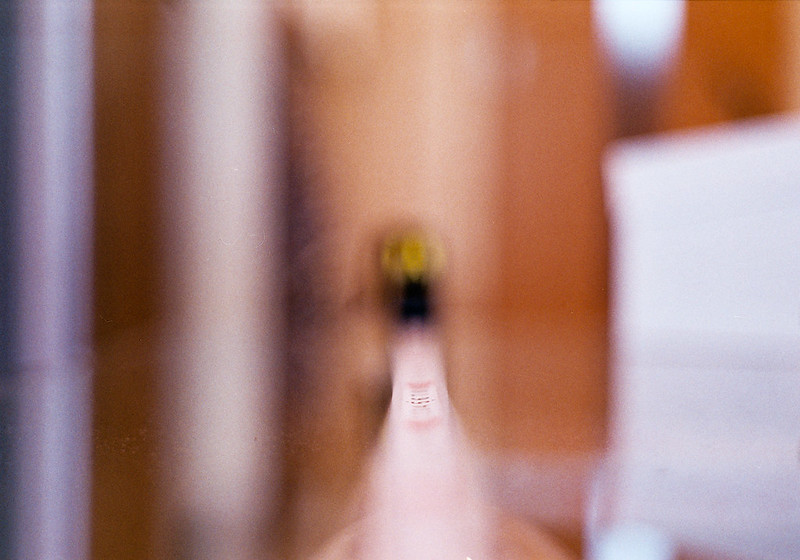
In practice its a bit of a challenge to shoot this lens at MFD, but it can be done. Here's a shot of a lupine at MFD at around f2.8.

Apart from the unique close focus feature, this lens is a great general purpose 50. Focus throw is a bit long for snapshooting, like all the early 50s, but 35mm is better for snapshooting anyway
A snapshot:

The Nikkor-H is sharp in the center and good for isolating subjects at larger apertures at mid distances, and great across the frame from mid apertures.
f2 or 2.8
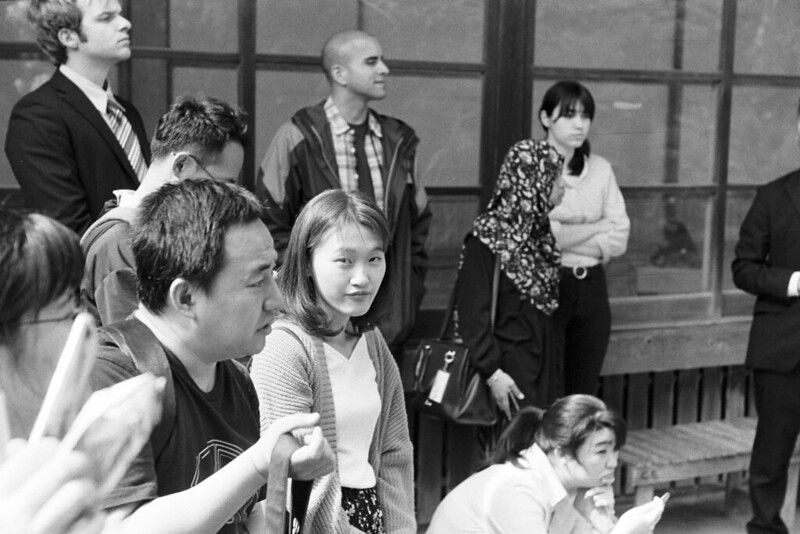
Around f5.6

On my 1f
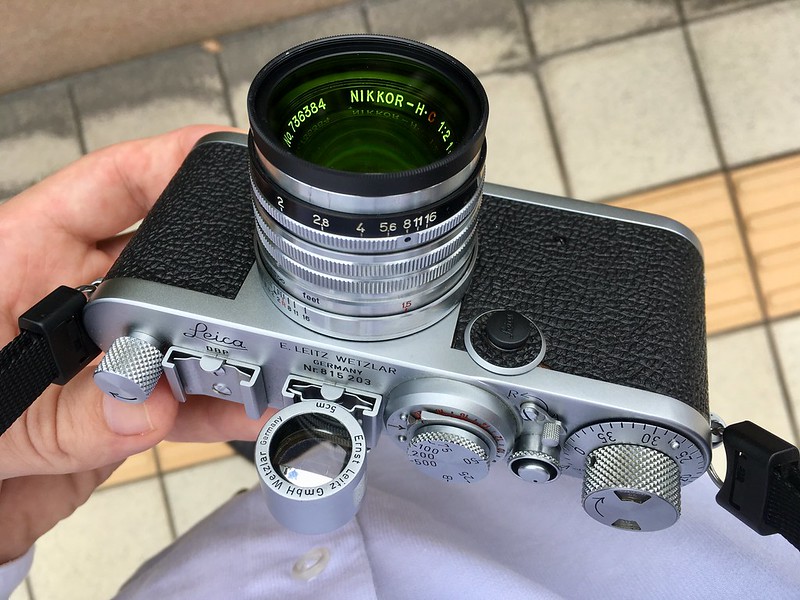
"Star of the American Road"
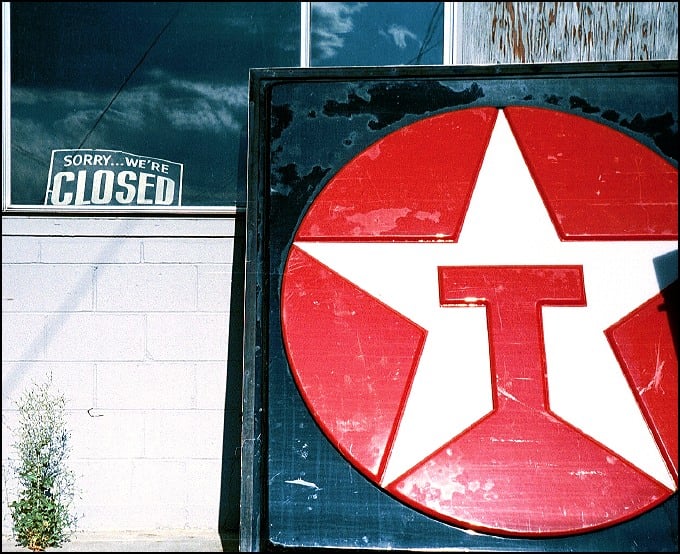
Kiev 4A, J-8M (1969)

Kiev 4A, J-8M (1969)
I'll be adding more Jupiter-8 Images here, will be updating over the weekend. I have a pair of 1952 J-8's and a 1957 J-8 originally in Contax mount that was converted to LTM using an I-61 mount. I also have a 1970s J8M converted to Leica mount using a Canon 50/1.8 focus mount- bought off Ebay.

Most of the J-8's are very good. This one is from 1975.

Like the J-3 and other lenses made to the Zeiss standard, they usually need to be adjusted for use on a Leica.


Taking a J-8 apart, getting the front element and triplet in place and centered can be an issue. Unlike the Sonnar optics, they are not stamped into metal. The tripley and front element are both held in place by the namering with a spacer between the two. Easy to misalign.
F2 is more forgiving than the F1.5 of the J-3.


Optimized for close-up/wide-open, you can typically use out to infinity.

Most of the J-8's are very good. This one is from 1975.

Like the J-3 and other lenses made to the Zeiss standard, they usually need to be adjusted for use on a Leica.


Taking a J-8 apart, getting the front element and triplet in place and centered can be an issue. Unlike the Sonnar optics, they are not stamped into metal. The tripley and front element are both held in place by the namering with a spacer between the two. Easy to misalign.
F2 is more forgiving than the F1.5 of the J-3.


Optimized for close-up/wide-open, you can typically use out to infinity.
dourbalistar
Buy more film
The Nikkor-H.C 5cm f/2 was my first 50mm rangefinder lens, and a great introduction down the slippery slope vintage LTM lenses. 
Here's one wide open near the rangefinder-coupled MFD.

2018.05.26 Roll #157-02222-positive.jpg by dourbalistar, on Flickr
Stopped down to f/11, it has great sharpness and bite.

2020.02.29 Roll #238-04458-positive.jpg by dourbalistar, on Flickr
Here's one wide open near the rangefinder-coupled MFD.

2018.05.26 Roll #157-02222-positive.jpg by dourbalistar, on Flickr
Stopped down to f/11, it has great sharpness and bite.

2020.02.29 Roll #238-04458-positive.jpg by dourbalistar, on Flickr
markjwyatt
Well-known
For close focus, I use a Zeiss Ikon CONTATEST. The accessory viewfinder corrects the parallax and adjusts the rangefinder range (20" to 40"), plus a Proxar 1 gets you a lot closer. It works really well:
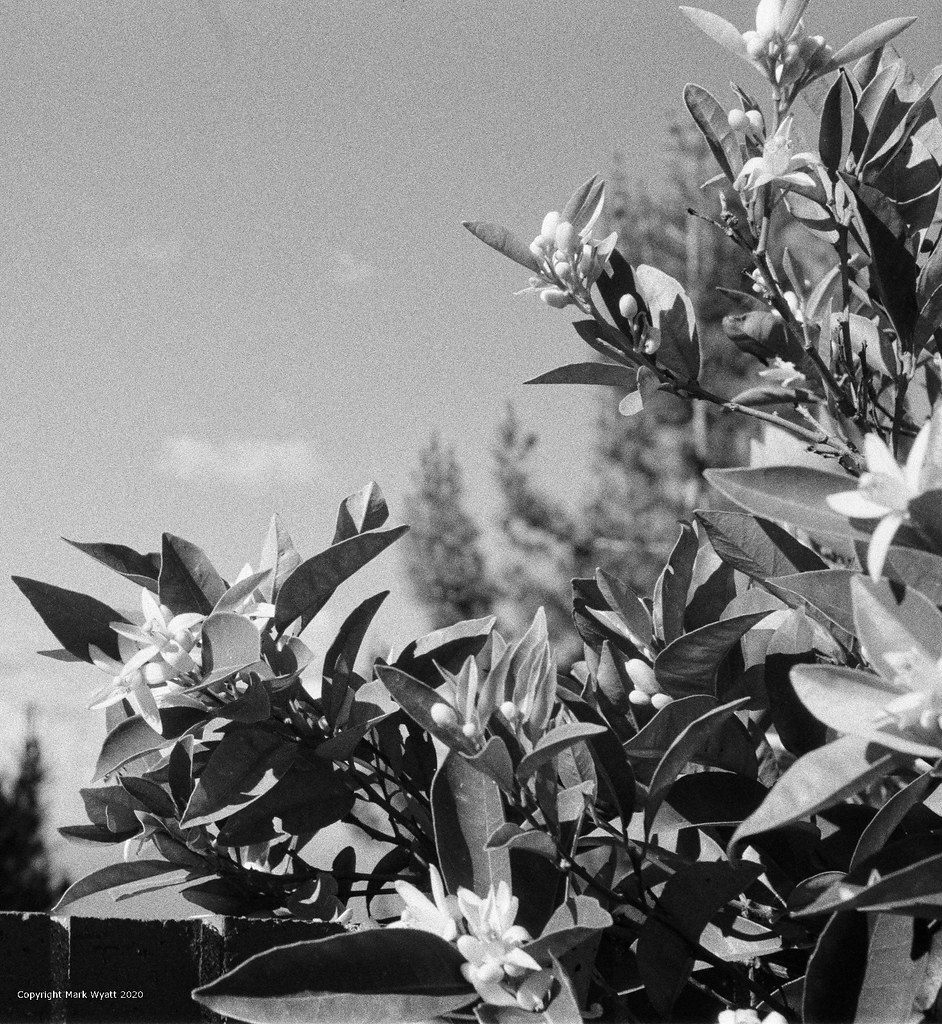
Orange Blossoms by Mark Wyatt, on Flickr

Orange Blossoms by Mark Wyatt, on Flickr
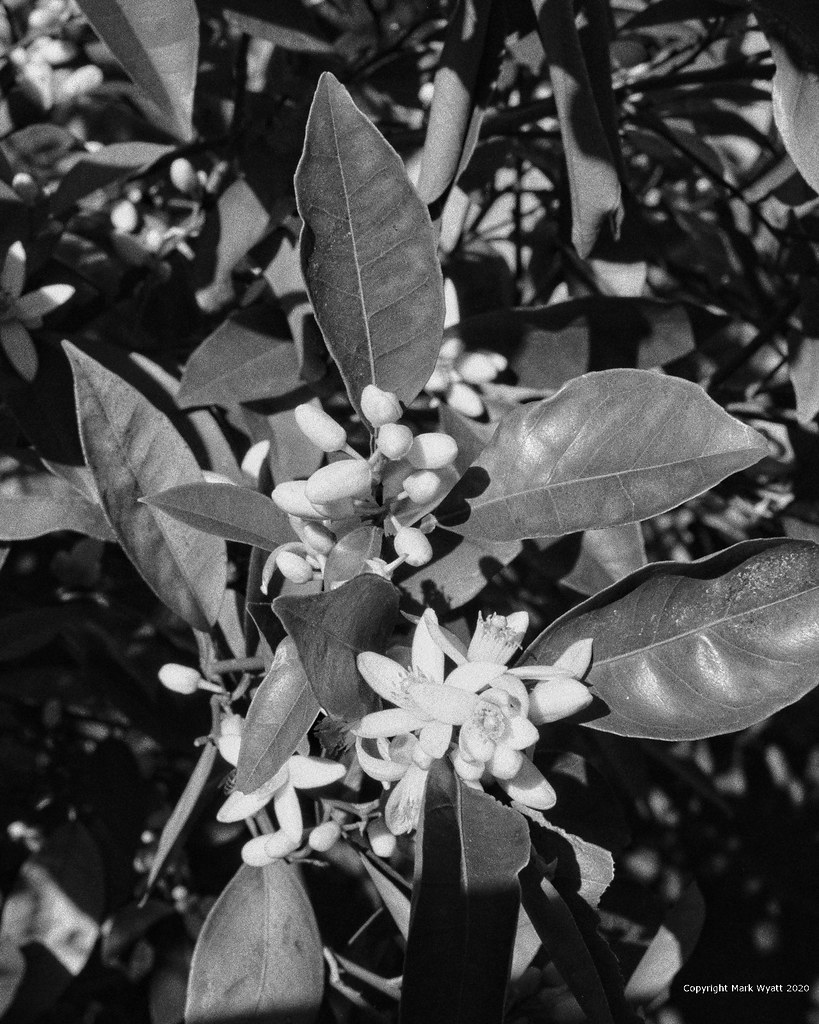
Orange Blossoms by Mark Wyatt, on Flickr

Orange Blossoms by Mark Wyatt, on Flickr

Orange Blossoms by Mark Wyatt, on Flickr

Orange Blossoms by Mark Wyatt, on Flickr
Share:
-
This site uses cookies to help personalise content, tailor your experience and to keep you logged in if you register.
By continuing to use this site, you are consenting to our use of cookies.
















